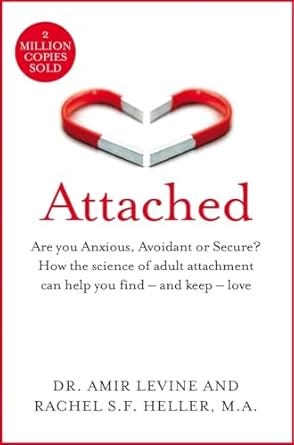Is there a science to love? In this groundbreaking book, psychiatrist and neuroscientist Amir Levine and psychologist Rachel S. F. Heller reveal how an understanding of attachment theory – the most advanced relationship science in existence today – can help us find and sustain love.
Pioneered by psychologist John Bowlby in the 1950s, the field of attachment explains that each of us behaves in relationships in one of three distinct ways:
Anxious people are often preoccupied with their relationships and tend to worry about their partner’s ability to love them back.
Avoidant people equate intimacy with a loss of independence and constantly try to minimize closeness.
Secure people feel comfortable with intimacy and are usually warm and loving.
With fascinating psychological insight, quizzes and case studies, Dr Amir Levine and Rachel Heller help you understand the three attachment styles, identify your own and recognize the styles of others so that you can find compatible partners or improve your existing relationship.
Here are 5 key lessons from the book Attached by Amir Levine and Rachel Heller:
Understanding Attachment Styles: The book introduces three main attachment styles—secure, anxious, and avoidant—and explains how they influence our behavior in relationships. Recognizing your attachment style and your partner’s can help you navigate relationship challenges more effectively.
The Importance of Emotional Support: Secure individuals thrive in relationships where they receive consistent emotional support. The book emphasizes the importance of understanding how your partner expresses and needs support, and how this can enhance emotional closeness.
Avoidant Behaviors Can Create Distance: People with an avoidant attachment style often struggle with intimacy and can become distant or withdrawn when their partner seeks closeness. Recognizing these patterns can help avoid misunderstandings and improve communication.
Anxious Attachment and Fear of Abandonment: Individuals with an anxious attachment style often experience insecurity and fear of abandonment. The book suggests strategies to manage these feelings and create more balanced, secure relationships.
Creating Secure Attachment: The book offers practical advice on how individuals with anxious or avoidant attachment styles can work towards developing a more secure attachment, leading to healthier, more fulfilling relationships.











